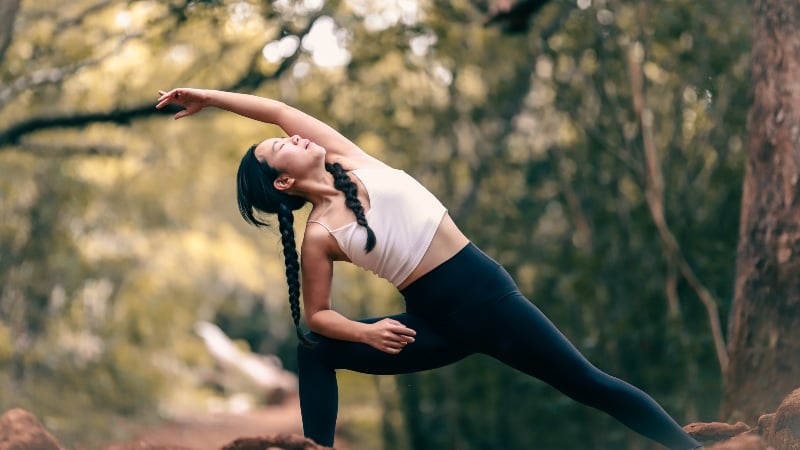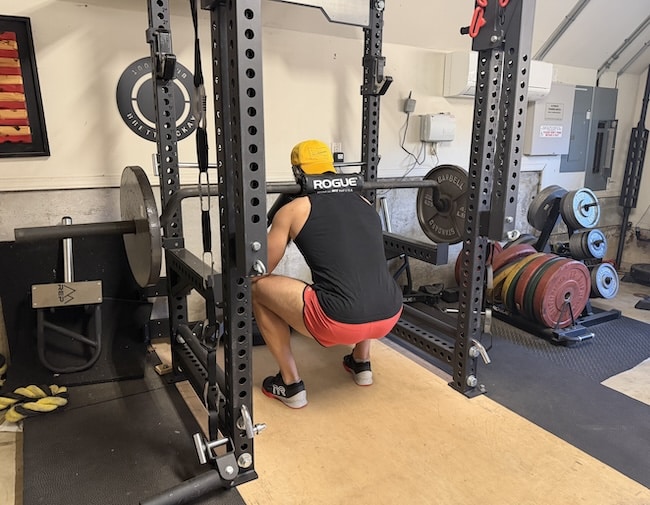These Affordable Amazon Snow Boots Are Suddenly Everywhere — Here’s Why Shoppers Keep Buying Them
Dec 9, 2025Health & Fitness
Ashtanga Yoga (In) Practice — 10 Things to Expect
- Jul 23, 2023
- 0 Comments
1146

– Have you wondered what an Ashtanga yoga class looks like? Is it a style of yoga for you? I have gathered a list of 10 things you can expect, but first, get some basic information on Ashtanga yoga and its six sequences!
The basics
The name Ashtanga yoga comes from two words. Ashta refers to the number 8 and the word anga means limb or a body part. That is because this style of yoga integrates eight so-called limbs to become one complete journey in life. Asana — the body posture is only one limb and it is completed by Yamas (morals), Niyamas (social conduct), Pranayama (breath control), Pratyahara (withdrawal of the senses), Dharana (concentration), Dhyana (meditation) and Samadhi (nirvana, absorption). Ashtanga Yoga was popularized by K. Pattabhi Jois in the 20th century. As all yoga practices, Ashtanga is based on the Yoga Sutras by Patanjali (philosopher and thinker) written around 4th century CE. It’s a dynamic, physically demanding practice, which was designed to create strength, flexibility, and balance in the body and mind. The Jois familly evolved and fine tuned the practice from its original form. Today the schools adepts become worldwide certified teachers under the watchful eye of Sharath Jois — the grandson of Pattabhi, in Mysore, India. The practice is ideally done in a flowing, meditative manner, where each movement is coordinated with the breath. The breath is viewed as the key element of the practice, and students are encouraged to develop a deep but narrow, even breath that helps to calm the mind and create a state of focus and concentration. The Ashtanga Yoga practice is based on a defined sequence of postures, which are organized into six series:Series
During the lifelong practice, you can master the six sequences in the order below and gain the crystal body. The different series of Ashtanga Yoga is meant to be practiced under the guidance of a skilled and experienced teacher, and it can take many years of dedicated practice to progress through the different series.- The Primary Series (Yoga Chikitsa): This is the first and most foundational series of Ashtanga Yoga, and it focuses on building strength, flexibility, and stamina in the body. The primary series consists of around 75 postures, including sun salutations, standing poses, seated poses, and finishing postures.
- The Intermediate Series (Nadi Shodhana): Once you have mastered the primary series, you can move on to the intermediate series, which includes more challenging postures such as arm balances, backbends, and inversions. The intermediate series is designed to purify the nervous system and open the energy channels in the body.
- The Advanced Series A (Sthira Bhaga): The advanced series is split into two parts, A and B, and is intended for experienced practitioners who have developed a high level of strength and flexibility. The advanced series includes even more The Advanced Series B (Sthira Bhaga): This is the second part of the advanced series, and it includes even more advanced postures that require exceptional strength, flexibility, and focus.
- The Fifth Series (Nitya): This series is reserved for highly advanced practitioners and includes a wide range of challenging arm balances, backbends, and inversions.
- The Sixth Series (Atiyoga): This is the highest and most advanced series of Ashtanga Yoga, and it is intended only for those who have achieved a very high level of skill and mastery in the practice. It includes a wide range of extremely challenging postures that require exceptional strength, flexibility, and focus.
The practice and what to expect
1. You will often hear Sanskrit language. It’s ok if you don’t know the meaning at first, just follow the group :). During a led-class the teacher will call each position in skanskrit. Most Ashtanga yoga teachers count in Sanskrit (ekam, dve, treeni, chatvaari, pancha and so on) to take the student through the asanas step by step. There are also the opening and the closing mantras cited in Sanskrit. 2. It’s an energizing practice that stimulates the nervous system. You can read more about it in the link below:Practice the Yoga Your Mental State Appreciates Know your yoga, know your-self. medium.com
— You will quickly notice the effect of practice on your body and mind. I felt my body to be more capable, less tired, and with time more gracious I noticed how my mind sharpened, focused, and created layers of determination. 3. There are six days of practice. Sunday is a rest day. However, during moon days (new moon and full moon — check actual dates in the current calendar) you will discover that the Ashtanga yoga classes in your local studio are cancelled. You might also consider a rest from practice during the first days of your menstruation period. 4. Practice is done with intention. There is high vibration energy that you create during the practice. Setting an intention is a way of channeling that energy to materialise a specific vision. 5. At the very beginning of the class, together with the teacher or repeating after the teacher, you cite, in a melodic manner the opening mantra and at the end of the practice — the closing mantra. It can be related to setting an intention for the practice, however the mantras are a way of expressing gratitude to Patanjali and the lineage of teachers who made the ancient practice available for us today. Pro tip: you can lip-sing for as long as it takes to memorize the text 6. There are two types of classes:
led class — participants practice at the same pace. The teacher is leading the group through the postures, giving cues and prompting inhales and exhale. In led classes, the teacher will count the steps of asanas to break them down into precise moves.
This class is best for beginners, but advanced students enjoy it just as much
6. There are two types of classes:
led class — participants practice at the same pace. The teacher is leading the group through the postures, giving cues and prompting inhales and exhale. In led classes, the teacher will count the steps of asanas to break them down into precise moves.
This class is best for beginners, but advanced students enjoy it just as much  Yoga studios offer classes dedicated to the primary series, half the primary series, and the second, intermediate series.
Self-practice is often referred to as Mysore — This class is for someone who knows the order of at least half of the primary sequence. That’s because you practice at your own pace, nevertheless under the watchful eye of the teacher, who is there to help you or do an adjustment
Yoga studios offer classes dedicated to the primary series, half the primary series, and the second, intermediate series.
Self-practice is often referred to as Mysore — This class is for someone who knows the order of at least half of the primary sequence. That’s because you practice at your own pace, nevertheless under the watchful eye of the teacher, who is there to help you or do an adjustment  7. Position adjustments — physical, verbal, and visual. The teacher chooses what way is best to explain how to adjust your current position. I enjoy physical adjustments, though some people are quite the opposite. Many yoga studios, to accommodate the differences, provide a card, which states your preferences, for example “don’t touch” or “Physical adjustment is OK”, to put beside your yoga mat for the teacher.
8. Repetitiveness is a great part of Ashtanga yoga. By great I mean large and awesome
7. Position adjustments — physical, verbal, and visual. The teacher chooses what way is best to explain how to adjust your current position. I enjoy physical adjustments, though some people are quite the opposite. Many yoga studios, to accommodate the differences, provide a card, which states your preferences, for example “don’t touch” or “Physical adjustment is OK”, to put beside your yoga mat for the teacher.
8. Repetitiveness is a great part of Ashtanga yoga. By great I mean large and awesome  It’s all about precision and mastering each move. The sequence stays the same and you get the chance to notice how your body and mind changes.
That’s the beauty of ashtanga yoga in essence.
9. It’s suitable for any level. It doesn’t matter where you start if you take the right path. Teachers alter positions (asanas) to meet your physical abilities, whatever they might be. Your practice changes over time, as your body capabilities increase.
10. During the class we all learn important life virtues. Amongst others humility and self-acceptance. We start to accept out limits, we learn that rest is not a waste of time, that at the end of the day we are only up against yourself. The above relates to practice, as well as all your endeavors off the mat.
Conclusion
Now that you know what to expect I hope you are curious and motivated to get to know it better. It can be a great adventure and you can learn much about your self.
It’s all about precision and mastering each move. The sequence stays the same and you get the chance to notice how your body and mind changes.
That’s the beauty of ashtanga yoga in essence.
9. It’s suitable for any level. It doesn’t matter where you start if you take the right path. Teachers alter positions (asanas) to meet your physical abilities, whatever they might be. Your practice changes over time, as your body capabilities increase.
10. During the class we all learn important life virtues. Amongst others humility and self-acceptance. We start to accept out limits, we learn that rest is not a waste of time, that at the end of the day we are only up against yourself. The above relates to practice, as well as all your endeavors off the mat.
Conclusion
Now that you know what to expect I hope you are curious and motivated to get to know it better. It can be a great adventure and you can learn much about your self.
Disclaimer: This story is auto-aggregated by a computer program and has not been created or edited by menshealthfits.
Publisher: Source link







